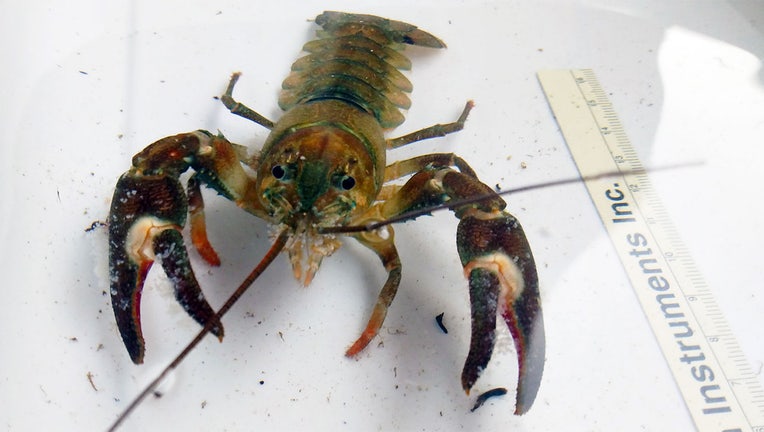Invasive crayfish species found for first time in Minnesota lake

Pictured signal crayfish. (Credit Minnesota Department of Natural Resources) (Supplied)
DOUGLAS COUNTY, Minn. (FOX 9) - The Minnesota Department of Natural Recourses (DNR) said an invasive species of crayfish has been found in the state for the first time at a lake in Douglas County.
In a press release Friday, the DNR said it was alerted in October by a commercial harvester who trapped two signal crayfish in Lake Winona. Since the first catch, the harvester found an additional eight crayfish.
The DNR described the signal crayfish as bluish-brown to reddish-brown in color, having two large pincer claws with a white or pale blue-green patch, and it can grow up to seven inches long.
Signal crayfish is native to the Columbia River in Washington, Oregon, Idaho and British Columbia, but has often been imported and sold as pets. It feeds on aquatic plants, detritus, fish eggs, smaller crayfish species and other native invertebrates.
"Importing live, non-native crayfish to Minnesota is illegal without a permit," DNR Aquatic Invertebrate Biologist Don Eaton said. "Regardless of species, it is illegal to release non-native plants or animals into the environment. We deeply appreciate that people harvesting crayfish are keeping a close watch on their catch and that, in this case, the harvester quickly reported this unusual-looking crayfish to the DNR."
The DNR conducted its own trapping on Winona Lake and two adjacent connected lakes but did not capture any signal crayfish. Of the 10 crayfish the harvester caught, only one was female, and there is no evidence of any eggs or juvenile crayfish at this time. The DNR believes the signal crayfish might outcompete native species for food and habitats, as it is larger and more aggressive than native crayfish and the rusty crayfish, another invasive species, according to the press release.
To learn more about signal crayfish or report a potential sighting, visit the DNR's website here.


